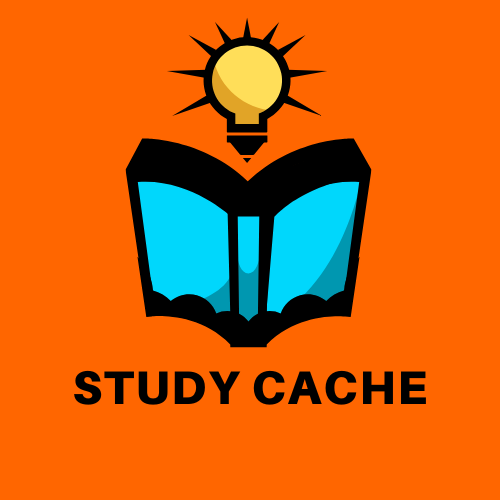1. Introduction to App Clips and Their Role in User Engagement
In the rapidly evolving landscape of mobile technology, App Clips have emerged as a pivotal innovation that redefines how users interact with applications. Essentially, an App Clip is a lightweight, focused version of a full app designed to deliver specific functionalities instantly, without the need for a full download. This core idea aligns with the broader shift towards seamless, frictionless user experiences that prioritize immediacy and convenience.
Historically, user engagement with mobile apps required multiple steps: searching, downloading, installing, and then using the app. Over time, this process became a barrier, particularly for users seeking quick access to specific features. As a response, App Clips evolved to facilitate instant interaction, allowing users to accomplish their goals in seconds. This evolution reflects a broader trend: digital interactions are increasingly expected to be quick, intuitive, and accessible from the first tap.
In today’s digital environment, where attention spans are shrinking and competition is fierce, the significance of delivering seamless and instant experiences cannot be overstated. For educational platforms, this means providing learners immediate access to content, which can greatly enhance motivation and retention. To understand the deeper implications, explore the immediate luminary latest update for insights on current trends shaping mobile engagement strategies.
2. The Educational Context: Why Immediate Engagement Matters
Rapid access to educational content significantly influences how learners absorb information. Studies indicate that immediacy in content delivery increases engagement and improves retention rates. When students or users can quickly access relevant lessons or resources, they are more likely to stay committed and develop a habit of regular learning.
During the COVID-19 pandemic, the surge in demand for online educational tools exemplified this principle. Educational apps that allowed students to jump directly into lessons via quick links or App Clips saw a substantial increase in active users. This trend underscores a fundamental truth: instant access reduces barriers and fosters loyalty among learners.
Moreover, the ability to access educational content instantly supports just-in-time learning—where users seek knowledge exactly when they need it. This approach aligns with modern educational theories emphasizing contextual and personalized learning experiences, which are more effective when delivered seamlessly. For example, a student studying geography might tap an App Clip to view localized maps or quizzes without delay, reinforcing their learning process.
3. Technical Foundations of App Clips Supporting Engagement
a. Architecture and Functionality of App Clips
App Clips are built with a lightweight architecture optimized for speed and simplicity. They are integrated via a combination of URL schemes, NFC tags, QR codes, and other proximity triggers. Once activated, an App Clip loads a predefined subset of app features, usually under 10 MB, ensuring rapid startup times. This design allows learners to access specific educational modules instantly, making learning more accessible.
b. Facilitating Frictionless Onboarding and Usage
One of the critical advantages of App Clips is their ability to minimize onboarding friction. Users can engage without creating accounts or installing full applications. For educational apps, this means a student can instantly access a quiz or tutorial—say, a quick science experiment simulation—by scanning a QR code at a museum or classroom. This immediacy encourages repeated interaction and builds user familiarity with the platform.
c. Trust and Regional Availability
Features like automatic refund processing and regional content restrictions are crucial for maintaining user trust. Regional availability ensures that users access content compliant with local regulations, which is vital for educational content that may vary across regions. For instance, an educational app might offer localized language support or region-specific lessons, enhancing relevance and credibility.
4. Enhancing User Experience Through Contextual and Personalized Interactions
a. Leveraging Location and Device Context
App Clips can utilize device sensors and location data to deliver highly relevant content. For example, a geography app might detect that a user is near a historical monument and offer a quick, tailored tour guide via an App Clip. This contextual approach makes educational interactions more meaningful and engaging.
b. Customization and Adaptive Interfaces
Adaptive interfaces within App Clips can modify content based on user preferences or past interactions. An educational app might present beginner-level lessons to new users and more advanced topics to returning learners. Such personalization encourages continued engagement and demonstrates the importance of tailoring experiences to individual needs.
c. Examples from the Google Play Store
Many educational apps on Google Play support App Clips-like features, offering quick lessons or quizzes directly from search results or notifications. For instance, language learning platforms may present a mini-lesson when users tap a notification, encouraging immediate practice without full app installation. These examples highlight how quick, relevant interactions foster sustained learning habits.
5. Case Study: Educational Apps and App Clips in Action
| Aspect | Details |
|---|---|
| App Example | “EduQuick” – an educational app offering quick quizzes via App Clips |
| Implementation | QR codes placed in museums and schools enable instant access to mini-lessons and assessments |
| Metrics of Success | 30% increase in user engagement; 20% higher retention over 3 months |
This case exemplifies how integrating App Clips into educational strategies can dramatically enhance engagement. By offering immediate, contextual access, learners are more likely to interact regularly and develop deeper learning habits.
6. Challenges and Limitations of Using App Clips for Engagement
Despite their advantages, App Clips face several hurdles. Technical limitations, such as device compatibility and fragmentation across platforms, can hinder widespread adoption. Privacy concerns also pose challenges; users need assurance that their data is secured, especially in educational contexts involving minors.
Regional restrictions may restrict access to certain features or content, potentially limiting global reach. For example, content tailored for specific regions might not be available everywhere, which can impact user engagement in diverse markets. Developers and educators must navigate these constraints carefully to maximize benefits.
7. Strategies for Maximizing Engagement with App Clips
- Design lightweight, compelling experiences: Focus on core functionalities that encourage repeated use. For example, a language app could offer daily vocabulary challenges via App Clips.
- Smooth transition to full applications: After initial engagement, guide users seamlessly into the full app for more comprehensive learning modules.
- Leverage analytics: Collect data on user interactions to refine content delivery and optimize user pathways, ensuring continuous improvement.
8. The Future of User Engagement with App Clips and Educational Content
Emerging technologies promise to elevate App Clips further. AI-driven personalization can tailor learning paths dynamically, while augmented reality (AR) integration offers immersive educational experiences. Platforms like Google Play Store are expanding support for such features, broadening access to innovative learning tools.
Predictions suggest that App Clips will be central to the next era of mobile interaction, especially in education, where instant, contextual, and personalized experiences foster deeper engagement. Staying abreast of these trends is crucial for developers and educators aiming to leverage the full potential of mobile technology.
9. Non-Obvious Insights: Deepening User Engagement Beyond the Surface
Psychologically, instant gratification from quick access to educational content boosts motivation and reduces frustration. This effect is especially potent in learning, where immediate positive feedback can reinforce behavior and build confidence.
“Trust and transparency are the foundations of sustained engagement, especially when regional restrictions and refunds are involved.”
Furthermore, understanding regional and cultural contexts allows for tailoring educational experiences that resonate more deeply with users. Localization efforts—such as language support and culturally relevant content—can significantly enhance user trust and loyalty.
10. Conclusion: Harnessing App Clips for Transformative User Engagement
In summary, App Clips represent a powerful tool for delivering immediate, contextual, and personalized educational experiences. When thoughtfully integrated, they can boost user engagement, foster loyalty, and facilitate effective learning—especially in an age where instant access is expected.
For developers and educators alike, the key lies in designing lightweight, compelling interactions that smoothly transition into full experiences, supported by data-driven refinement. As emerging technologies like AI and AR mature, the potential for App Clips to revolutionize mobile learning continues to grow.
To stay updated on the latest developments and strategic insights, consider exploring the immediate luminary latest update. Embracing these innovations will be crucial for shaping the future of digital education and user engagement.

